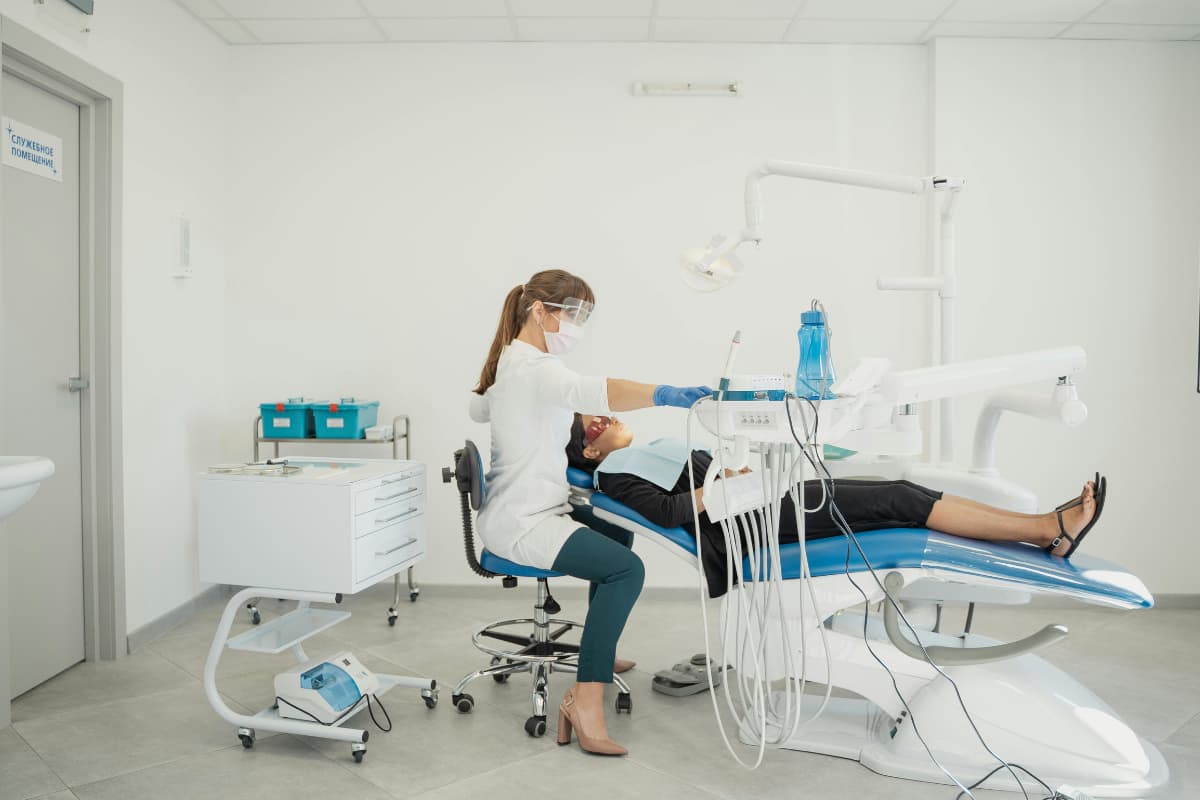What does fear of the dentist include?
The fear of the dentist has many faces. If measures such as root canal treatment are imminent, a certain degree of nervousness is a completely normal reaction. But prophylaxis alone causes discomfort for many people. In comparison, a preventive examination with a family doctor is often easier. So where does this disproportionate dental anxiety that lies dormant in so many patients come from?
What are the reasons for fear of the dentist?
The specific causes of fear of the dentist can be very individual. However, they often fall into one of the following categories:
- Early bad experiences: Even as a toddler, preventive examinations start at the dentist. If not enough attention is paid to the child's needs, negative experiences occur very early on, which are sometimes firmly anchored in the subconscious.
- Afraid of pain: Various treatment methods at the dentist can actually be associated with pain, for example when deep-seated tooth decay needs to be treated.
- Fear of the unknown: Bruxism, exposed tooth necks, periodontitis, etc. — there are many options for oral conditions that require treatment. Many people are concerned about what might be revealed during a preventive examination.
- Sense of lack of control: It is a strange feeling when the dentist looks in the mouth and the patient does not know that he is there. This results in a loss of control.
- Threatening environment: Even terms such as “drill” cause primal fears in people. Disturbing noises from the treatment room while you are sitting in the waiting room, the smell of disinfectant and a sterile environment can increase existing anxiety.
- Ignorance: Lack of communication on the part of the dentist about the treatment process, the instruments used or the expected sensations can increase anxiety.
- Media and everyday influences: Negative portrayals of dental visits in the media, at school or at work can increase existing fears or create new fears.
Where does dental phobia begin?
Dental phobia, also known as oral phobia, is significantly different from normal discomfort. It is expressed in acute anxiety or panic attacks. The physical symptoms go far beyond feeling uneasy and cold hands — they range from extreme tremors and sweats to nausea and vomiting to feelings of anxiety, chest pain and rapid heartbeat.
Dental phobia is described by patients as overwhelming and crippling felt. Even the thought of visiting a dentist or entering a dental practice can trigger symptoms. As a result, those affected tend to avoid dental appointments, even if they suffer from severe toothache or serious dental conditions.
In particularly serious cases, a Dental treatment almost impossible. Even dentists who specialize in anxiety patients will then no longer be able to help. Sufferers may consider therapy with a psychologist or psychotherapist to identify the underlying causes of anxiety and develop appropriate coping strategies.
How can I alleviate my patients' anxiety?
Dentists cannot treat a pathological anxiety disorder. However, they can help ensure that their patients' experience with the dentist is positive. The following measures help:
- Calming environment: When you and your practice staff radiate peace of mind, this helps your patients get well received at the practice and reduce nervousness.
- Proactive clarification: Before treatment, ask your patients whether they are afraid of the dentist or even have a dental phobia. Open and honest communication can help build trust. You also know directly which patients you should plan a little more time for.
- Accompaniment: Bringing someone you know to treatment can be particularly supportive for children and provide a sense of security.
- Preliminary meetings: Discuss the planned treatment process with the patient and explain the instruments used to provide a better understanding of the upcoming measures.
- Maintain control: Talk to your patient even during treatment so that they know exactly what is happening in their mouth. In this way, the perceived loss of control can be alleviated.
- Treatment in small steps: If possible, divide the treatment into smaller steps and give your patient breaks to relax their jaw muscles.
- Relaxation techniques: Breathing exercises, progressive muscle relaxation, or visualization techniques can help you stay relaxed during treatment. It may be useful to display flyers with appropriate exercises in the waiting room.
- Distraction: Sometimes distraction works better than communication. Offer your patients to listen to music or go on a mental journey and wear an eye mask to distract their thoughts from the treatment.
- Hypnosis: Through hypnosis, a reduced state of consciousness can be achieved in the patient, which allows a higher degree of relaxation. Appropriate additional training can sometimes be very helpful in everyday practice.
- Sedation: In some cases, only gentle sedation with laughing gas helps. General anesthesia may also be an option for complex treatments.
- Advanced technology: Advanced dental lasers can replace conventional devices in many areas and contribute to gentler and less noisy treatment — such as tooth decay, implants, root canal treatments, frenectomy and much more.
- Digital processes: Through processes such as a digital anamnesis Can your patients relax from home patient admission prepare, which creates one less stress factor in everyday practice. In this way, you also prevent careless mistakes that could result from the excitement in the waiting room.
- Positive feedback: Praise and positive encouragement during and after treatment can help build patient confidence and reduce anxiety about future visits.
Relaxation is the key to fighting anxiety
By creating a relaxed atmosphere, you and your healthcare professionals can reduce your patients' anxiety and create a more positive treatment experience enable. One of the most important points is a continuous and extensive communication with the patient.
But technology also provides added value in creating a relaxed practice environment. In addition to modern instruments in the treatment room, this also includes the software that is used in your dental practice. Through extensive automation, you and your practice staff can Nelly gain valuable time. Probably the most important factor for empathetic patient care.












